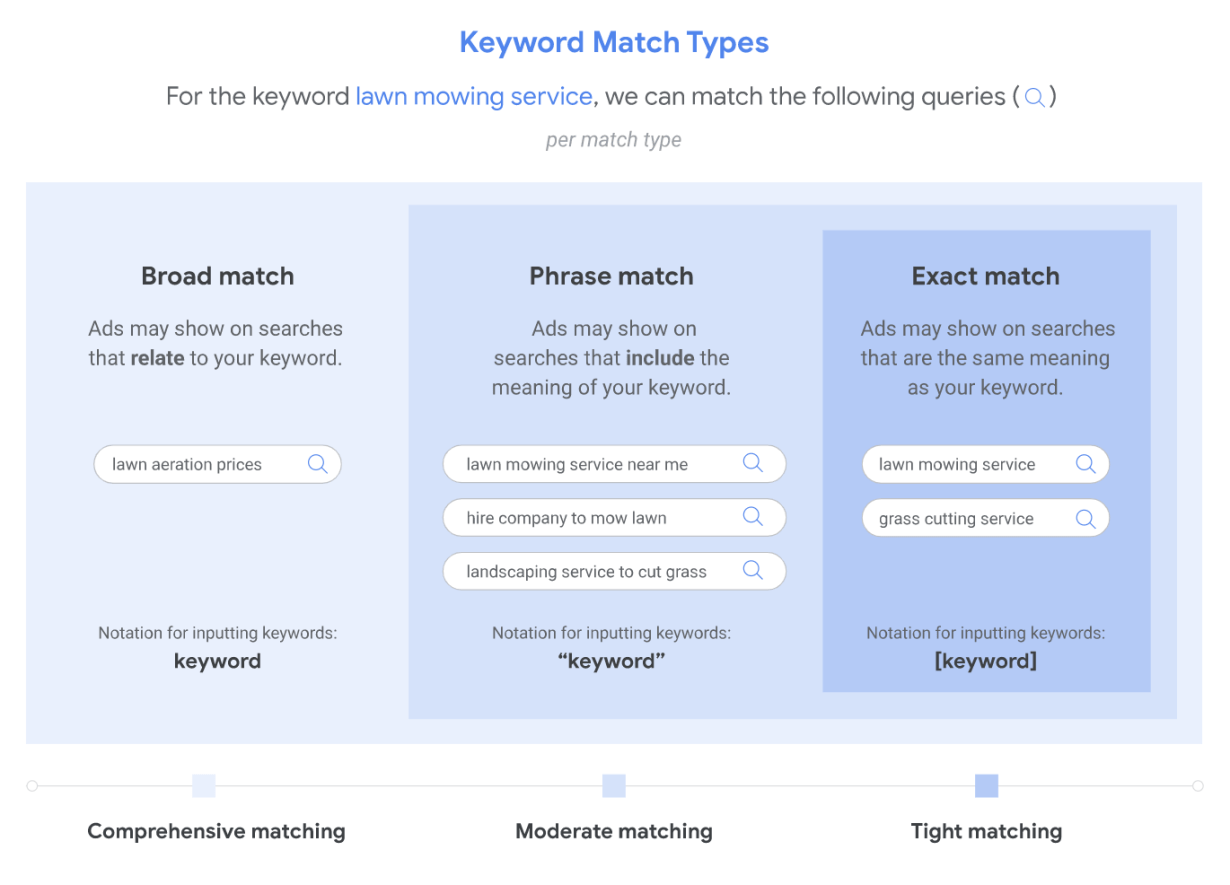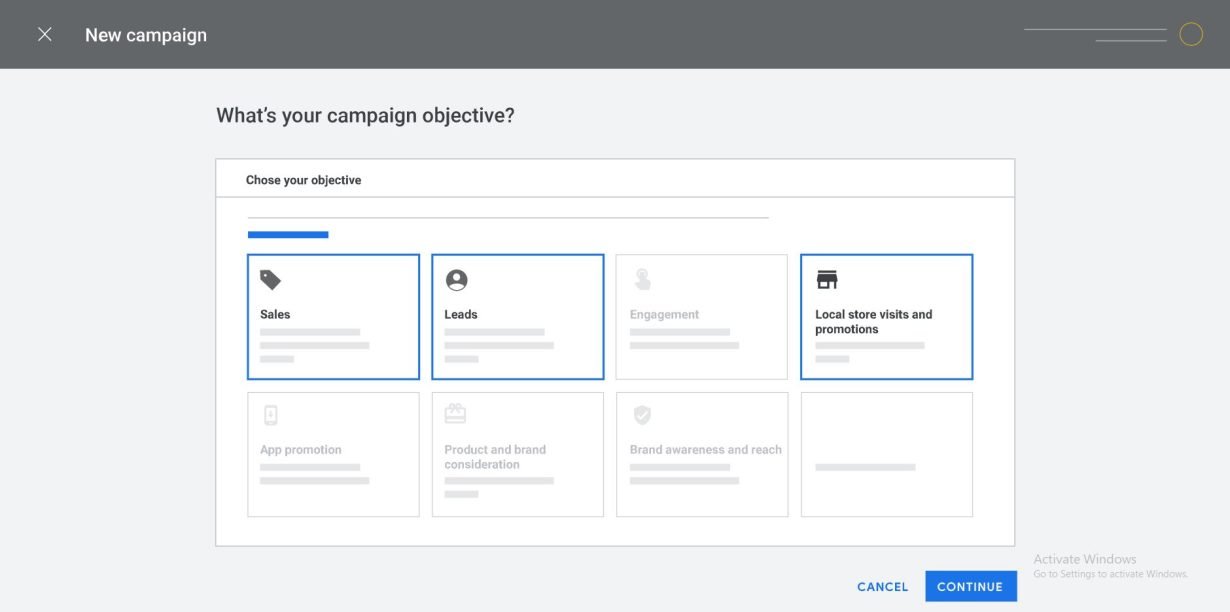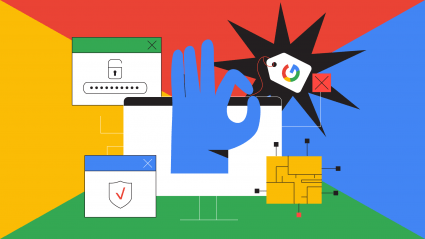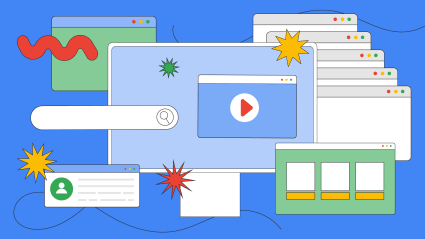Starting January 19th, Google started changing one of the auto-applied recommendations in Google Ads: “remove redundant keywords.”
If your brand has opted into auto-apply to remove duplicate keywords, you will notice the difference. In the past, this function was applied only to true duplicates (for example: having both [car] and [cars] in the same ad group). Going forward, this will impact keywords across match types (removing [car] when you have “car” in the same ad group). The update will remove any exact keyword in your account if it has a broader counterpart in the same ad group.
So why the change?
Automation (also known as artificial intelligence, or A.I.) has been showing up more and more across many Google paid search solutions for a while now. The application of AI to keyword match types is just the latest iteration of that strategy from the search giant. As keyword searches are characterized under one broad umbrella, marketers are going to lose more control and in some cases are going to lose complete access as Google continues to favor automation-driven solutions like Performance Max (PMax) campaigns.
So let’s dig a little deeper into this specific change and how you need to prepare for the AI-powered future of paid search.
What are keyword match types in Google Ads and what’s changing?
Before we get into what is changing and what to do about it, let’s do a quick keyword “match types 101” refresher and break down the different types of keyword match types and what they do.
In a Google Ads campaign, keyword match types allow you to basically set limits on how close the user’s search needs to be to the keywords you’ve bid on for your ad to be eligible for the SERP. The goal of setting the right keyword match types is to drive better quality and more relevant traffic to your website.
There are three different types of keyword matching:
- Broad match: The default match type that casts the widest net in terms of audience. A user’s query will include any word in a key phrase, in any order, including any word that relates to the keyword you’ve selected.
- Phrase match: Your ad can appear if the user uses your key phrase in the exact order that is entered.
- Exact match: This match type is the most restrictive: ads only appear if the user entered the exact phrase that you enter. It’s worth noting that Google has made changes so that ads may show up for searches that include synonyms or variations of the keyword.

Source: Google
So what’s changing with the new update? If you’ve got a brand match variant live in the ad group, Google will now remove any and all exact and phrase match keywords for that search query. The broad match keyword will take priority and will continue to serve.
Essentially, “redundant keywords” used to mean keywords that overlapped with better keywords with the same match type; now “redundant keywords” has expanded to include broader match types.
If you are enrolled in auto-apply, the ‘remove redundant keywords’ recommendation applies to you. Auto-apply recommendations mean that Google will implement suggestions (you guessed it) automatically based on your performance data, account settings, and trends on Google itself, with the goal of improving performance.
Even if you’re using auto-apply, you can choose which recommendations you want to opt into. But if your instinct is to immediately opt-out to maintain a level of manual control, slow down. Remember: machines won’t replace you, but people who are really, really good at working with AI, automation, and machine learning could. Unless, of course, that person is you.
Could PMax replace keyword match types in the future?
Everything in marketing is moving toward more automation and AI. As a result, marketers are losing control, which can be a distinctly uncomfortable process. These changes affect basic traditional marketing capabilities, like knowing how campaigns served an ad to which audience, for instance.
This new change from Google is no different; the change to keyword match types means losing some reporting on low-volume search queries. Many search marketers use that reporting to assess which queries are matching with certain keywords to discover new keyword themes and get insight into how users are searching.
But, despite the reduction in reporting insights, we’ve seen the search term exactly matching the root of the broad match keyword as broad match technology has advanced.
What this means is that Google is actually getting smarter and starting to take an audience-first approach based on intent, rather than simply matching a keyword to a search.
Marketers have also segmented search campaigns by match type to rein in CPC efficiency and avoid cross-pollination of searches. The upgrades to broad match make that segmentation unnecessary, since Google will match a search to a keyword based on user intent vs. match type alone.
That doesn’t mean there aren’t still questions about how effective this change will be. If you have broad match set up for the search term “car,” for example, will Google understand that you still need to maximize the number of times your ad shows up when someone searches “car” specifically vs. a term like “big rigs,” which isn’t applicable to your business? Will it recognize that inappropriate term and take appropriate action?
We don’t know yet; the answers can only come from substantial testing. We do know that Google has struggled with some contextual data when it comes to queries. Google itself recognizes that and is putting a lot of engineering power into rectifying that situation.
It does seem likely that Google will eventually move away from match types entirely. What then?
Here’s what we know:
- Marketers are going to lose more control
- Keyword broad match will continue to gain priority and momentum
- In some cases, marketers are going to lose complete control of some reporting insights, like the ability to see every single search term that matches with a keyword
To the last point, in PMax campaigns you don’t control keywords, you essentially show your website, outline your conversion goals, and then machine learning takes over. We expect Google to continue in that direction whether we like it or not.

How to adjust your keyword strategy in the face of Google’s push toward automation and AI
Right off the bat, you should review your accounts for auto-apply settings and make any necessary changes.
The biggest thing you should do now is test while you still can. We don’t know yet how much this change to match types will sacrifice efficiency for incremental searches and conversions. That’s where testing comes in.
Set up an A/B split test and pause all of your exact match keywords. Then let them roll up to broad match to see if it changes holistic performance. From there you can determine if there is an issue and how severe the problem is. At the very least, you’ll learn what’s causing some of the dips and identify any other factors contributing to it.
You should also consider conducting a keyword audit. Cleaning up your keywords and reviewing your ad groups should help you assess how you want to move forward.
While this change does represent a shift in what marketers can control in paid search, it’s not necessarily negative. Automation can make your campaigns effective and productive.
You should always take a test-and-verify approach whenever possible to new AI capabilities; keep in mind that you are the expert on what’s best for your paid search strategy and your Google Ads account, but you shouldn’t automatically assume any change is for the worse (or for the better, for that matter).
When it comes to automation and AI, the only way to learn is by doing.








Responses